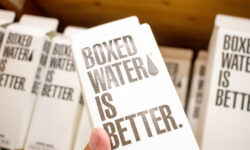3 Reasons Why the EPA’s Transparency Rule WON’T Destroy Science As We Know It

The U.S. Environmental Protection Agency recently announced that it plans to limit which scientific studies it uses to create regulations so that only reports with publicly available data are considered.
The big question is whether the EPA’s new rule will be so strict that it eliminates good research from consideration. Because of this concern, most news coverage and commentary around the change casts it in a negative light. But there are two sides to this story.
Here are 3 reasons why the EPA’s new transparency rule won’t destroy science as we know it:
- The EPA already requires its own researchers to make their data public.
At President Obama’s direction, the EPA released its “Plan to Increase Access to Results of EPA-Funded Scientific Research” in 2016. It requires datasets from EPA-funded studies to be published within 30 days of its publication unless the release would breach privacy, confidentiality, or intellectual property constraints. EPA-funded researchers must also develop Scientific Data Management Plans that describe all the data they plan to collect, the security measures they’ll use to protect anonymity, and how the information will be accessible. For more sensitive information, public access is only granted under controlled conditions at a research data center. This ensures that data is accessible to those who need to reproduce or verify a study, but not so accessible that anyone off the street can use it for their own interests. - Major academic journals already require transparency before publishing studies.
As a part of the peer review process, many academic journals like Science require scientists to submit the data underlying their studies. They allow for wiggle room when that data includes sensitive personal health information, but a study ultimately won’t be published if its authors refuse to provide data in any capacity. Open-access journals like Elsevier and PLOS, which help the public access scientific studies without huge financial barriers, also require authors to put their data in public data repositories. - There are ways to protect privacy and still make data public.
Although conversations often center around redacting personal information before data is published, it’s a costly and inefficient way to ensure anonymity. In today’s research, data is often grouped before its disclosed. As Peter Thorne, director of the Environmental Health Sciences Research Center at the University of Iowa College of Public Health, notes, “if you enrolled 100 people in a specific zip code, and 70 developed asthma and 30 didn’t, you disclose data on those groups rather than the individuals.” For truly exceptional circumstances, such as where research data includes information on one person with a particular ethnicity in a particular zip code, researchers can sign strict confidentiality agreements before being granted access to the information.
Long story short, so long as the agency’s final rule allows for the standard wiggle room (such as grouping data, requiring confidentiality agreements, or controlling who can access it) the hullaballoo about the EPA’s new transparency proposal is much ado about nothing.
Want to find out more? This week, the Sun-Sentinel ran an opinion piece by our chief science officer, Dr. Joseph Perrone, discussing why the EPA’s new rule isn’t the monster the media makes it out to be. You can read an excerpt below, or read the full article here on the Sun-Sentinel website:
There’s an undisputed crisis of irreproducibility facing research today. Science, one of the world’s top academic journals, suggests, “more than half of researchers struggle to reproduce not only the results of their fellow scientists, but their own experimental data.” The EPA policy amounts to giving independent researchers the opportunity to check one another’s work, and it’s a safeguard worth pursuing: If half of what we “know” about how chemicals and molecules operate in the body isn’t true, are current environmental or public health policies actually keeping us safe?
Consider the tennis match of nutrition science. One day, researchers announce that an evening glass of wine is healthy and increases longevity, while the next day others claim wine causes cancer. The flip-flops occur equally in other scientific fields, but the public generally loses interest once academics mention dose dependent responses and molecular pathways. It’s uncertainty in these complex studies that cast doubt on the quality of research used not just by the EPA, but by state and federal agencies nationwide.





